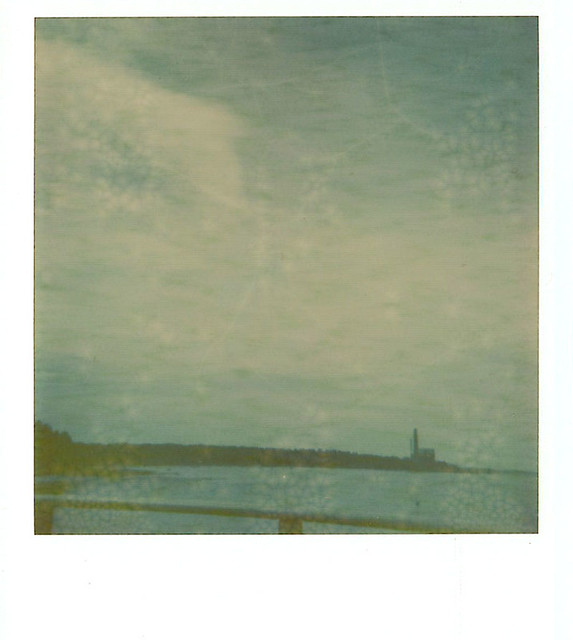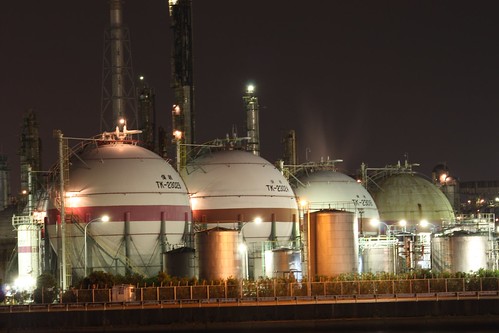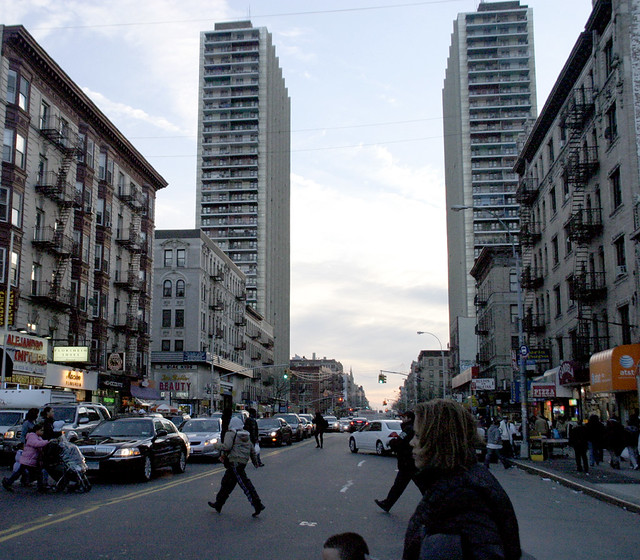On the Radio: The Illusion of Rural Independence
A transcript lives here.

Posted by
C Neal
at
3:32 PM
1 comments
![]()
file under: economics, indulgent self-reference, the built environment, yankee nativism

Posted by
C Neal
at
5:22 PM
2
comments
![]()
file under: 04101, the built environment
Posted by
C Neal
at
10:53 AM
3
comments
![]()
Posted by
C Neal
at
2:13 PM
7
comments
![]()
file under: indulgent self-reference
Posted by
C Neal
at
12:51 PM
5
comments
![]()
file under: economics

Posted by
C Neal
at
9:19 PM
3
comments
![]()
file under: economics
"The conditions of bourgeois society are too narrow to comprise the wealth created by them. And how does the bourgeoisie get over these crises? On the one hand by enforced destruction of a mass of productive forces; on the other, by the conquest of new markets, and by the more thorough exploitation of the old ones. That is to say, by paving the way for more extensive and more destructive crises...""New York, you're perfect
Don't please don't change a thing
Your mild billionaire mayor's
Now convinced he's a king
So the boring collect
I mean all disrespect
In the neighborhood bars
I'd once dreamt I would drink."
- LCD Soundsystem, "New York, I Love You But You're Bringing Me Down"

In 1999, I set off to go to college in Portland, Oregon — then known only as a rainy mid-sized city with scenic parks. In the five years I spent out there, I saw the city morph into a self-satisfied model of progressive hedonism. But, as I found after graduation in 2003, and as thousands of other young people have found since then, it’s awfully hard to land a decent job there, and it’s getting harder all the time to find an affordable place to live. (source)
Posted by
C Neal
at
7:53 AM
2
comments
![]()
file under: 04101, economics, Portland, succession, the built environment
 After six years of blogging for free, I've graduated into the realm of paid analog publishing, with the printing and preliminary distribution of the first-ever Portland Maine Bike Map (!).
After six years of blogging for free, I've graduated into the realm of paid analog publishing, with the printing and preliminary distribution of the first-ever Portland Maine Bike Map (!). If you own or work at a greater Portland business that might be interested in selling a few of these, please get in touch with me. If you'd like to bulk-purchase more than 10 at our wholesale rate for your workplace's commuting and parking management programs, your should also get in touch with me.
If you own or work at a greater Portland business that might be interested in selling a few of these, please get in touch with me. If you'd like to bulk-purchase more than 10 at our wholesale rate for your workplace's commuting and parking management programs, your should also get in touch with me.
Posted by
C Neal
at
10:22 PM
2
comments
![]()
file under: indulgent self-reference
 The cruise ships that arrive here are taller than most of the city's modest high-rises, and with 2500-3500 passengers, their arrival increases the city's population by about 5%. They have a certain looming effect on the city's landscape, and not just from their striking physical resemblance to the alien mother ships that blot out the sun above human cities in movies like Independence Day and District 9 (see below at right).
The cruise ships that arrive here are taller than most of the city's modest high-rises, and with 2500-3500 passengers, their arrival increases the city's population by about 5%. They have a certain looming effect on the city's landscape, and not just from their striking physical resemblance to the alien mother ships that blot out the sun above human cities in movies like Independence Day and District 9 (see below at right).  They flood the city's streets with a certain breed of well-fed, middle-aged idler, toting cameras and stylized cartoon maps of the downtown district.
They flood the city's streets with a certain breed of well-fed, middle-aged idler, toting cameras and stylized cartoon maps of the downtown district.
Posted by
C Neal
at
9:48 PM
1 comments
![]()
file under: 04101, psychogeography
"It was painted this way under the direction of Gerard O'Neill himself, who related a recent impression of the vantage point from Sausalito being an excellent scale reference for a possible setting inside a later model cylindrical colony... I deliberately wanted to imply the challenge of trying to transplant a workable ecosystem to a giant terrarium in Space."Many of these paintings came out of a NASA-sponsored summer camp for space theorists held at Ames research center in 1975. In that same year, Stewart Brand, the creator of the Whole Earth Catalog, gave O'Neill several pages to make the case for space colonies in his new publication, the CoEvolution Quarterly.
"I don't see the landscape of Carmel by the Sea as Gerard O'Neill suggests... Instead, I see acres of air-conditioned Greyhound bus interior, glinting slightly greasy railings, old rivet heads needing paint - I don't hear the surf at Carmel and smell the ocean - I hear piped music and smell chewing gum. I anticipate a continuous vague low-key "airplane fear."And Gary Snyder, the beat poet who practiced Zen Buddhism in the rural suburbs of the Sierra Nevada foothills, bemusedly shrugs off Brand's enthusiasm:
"Thanks for the invitation to comment on O'Neill's space colony. I'm sure you already suspect that I consider such projects frivolous, in the all-purpose light of Occam's Razor my big question about such notions is "why bother?" when there are so many things that can and should be done right here on earth. Like Confucius said, 'Don't ask me about life after death, I don't understand enough about life yet.' Anyway. I'm hopelessly backwards, I'm stuck in the Pleistocene. That is, seriously... I'm still mucking around in the paleo-ethno botany, which is a kind of zazen."
"I regard Space Colonies as another pathological manifestation of the culture that has spent all of its resources on expanding the nuclear means for exterminating the human race. Such proposals are only technological disguises for infantile fantasies."Simply replace "Space Colonies" with "shopping centers" or "subprime mortgages", and it can still apply today in our post-space age.
Posted by
C Neal
at
10:42 PM
1 comments
![]()
file under: astronomy, history, jackass environmentalism

Posted by
C Neal
at
10:05 AM
1 comments
![]()
file under: energy, the tropospheric wilderness

Posted by
C Neal
at
11:42 AM
1 comments
![]()
file under: astronomy

Posted by
C Neal
at
11:42 AM
4
comments
![]()
file under: 04101, The Hamilton Hustle (i.e. fiscal policy), watersheds

"The whole corporate campus seems a little dated,” says Joe Mansueto, chairman and CEO of Morningstar... “We've always liked being in Chicago. It helps keep employees on the pulse of what's happening in our society. It keeps them current with cultural trends and possibly technological ones.”
Posted by
C Neal
at
8:31 PM
0
comments
![]()
file under: psychogeography, the built environment
Posted by
C Neal
at
9:46 PM
1 comments
![]()
file under: Boston, inner-city wilderness tours
Posted by
C Neal
at
8:16 PM
2
comments
![]()
file under: garbage, geology, history, Seattle, succession
 And as a public park, several acres of Walden's former Woods have been cleared to make way for parking lots, a replica of Thoreau's cabin, and the "Thoreau Society Shop" (Thoreau's famous quotation on poverty - "Do not trouble yourself to get new things, whether clothes or friends... Sell your clothes and keep your thoughts. God will see that you do want society" - graces the shop's best-selling t-shirts).
And as a public park, several acres of Walden's former Woods have been cleared to make way for parking lots, a replica of Thoreau's cabin, and the "Thoreau Society Shop" (Thoreau's famous quotation on poverty - "Do not trouble yourself to get new things, whether clothes or friends... Sell your clothes and keep your thoughts. God will see that you do want society" - graces the shop's best-selling t-shirts). The pond's circumferential footpath in many places runs within inches of the water, compacting the forest soils and making it difficult for plants to take hold and establish their natural filtration functions.
The pond's circumferential footpath in many places runs within inches of the water, compacting the forest soils and making it difficult for plants to take hold and establish their natural filtration functions.
Posted by
C Neal
at
9:42 PM
0
comments
![]()
file under: Boston, history, inner-city wilderness tours

Posted by
C Neal
at
8:12 PM
0
comments
![]()
file under: yankee nativism
PORTLAND - Eric Cianchette plans to sell the Maine Wharf on the city's central waterfront, saying he's tired of trying to come up with a mixed-use development plan that Portland officials will approve.
"I remember my father telling me, 'You can't just go through life saying what you don't want. At some point, you have to tell people what you do want,"' Cianchette said, and city officials "really don't want anything."
Posted by
C Neal
at
12:26 PM
0
comments
![]()
 Photo courtesy of tabism.com
Photo courtesy of tabism.com Photo by flickr user Kyota.
Photo by flickr user Kyota. Yokkaichi oil refinery. Photo by flickr user Kyota.
Yokkaichi oil refinery. Photo by flickr user Kyota.
Posted by
C Neal
at
10:37 PM
0
comments
![]()
file under: Detroit, economics, succession
 Above: a small vernal pool in the right-of-way of an unbuilt city street - that's a manhole in the background.
Above: a small vernal pool in the right-of-way of an unbuilt city street - that's a manhole in the background.  This is another vernal pool closer to Ray Street. It's been a cold spring and so there wasn't much sign of life, but we did find what looked like some salamander jelly:
This is another vernal pool closer to Ray Street. It's been a cold spring and so there wasn't much sign of life, but we did find what looked like some salamander jelly: Near "Stepping Stone Lane," a street name that tells you all you need to know about this neighborhood. You can actually make out some of the foreclosure boxes through the trees in the background here.
Near "Stepping Stone Lane," a street name that tells you all you need to know about this neighborhood. You can actually make out some of the foreclosure boxes through the trees in the background here.
Posted by
C Neal
at
5:19 PM
0
comments
![]()

"This is the first expressway to be built across Manhattan, and we hope that the Lower Manhattan and Mid-Manhattan expressways, both of which have been the victims of inordinate and inexcusable delays caused by intemperate opposition and consequent official hesitation, will follow. These crosstown facilities are indispensable to be effectiveness of the entire metropolitan arterial objective of removing traffic through congested city streets."

 Looking west towards New Jersey over the new Trans-Manhattan Expressway and the George Washington Bridge bus terminal. Photo courtesy of the Port Authority of NY-NJ.
Looking west towards New Jersey over the new Trans-Manhattan Expressway and the George Washington Bridge bus terminal. Photo courtesy of the Port Authority of NY-NJ. George Washington Bridge bus terminal. Photo by gezellig-girl.com.
George Washington Bridge bus terminal. Photo by gezellig-girl.com. Two of the four Bridge Apartment towers, which mark the path of the Trans-Manhattan Expressway beneath. Photo by Zach K.
Two of the four Bridge Apartment towers, which mark the path of the Trans-Manhattan Expressway beneath. Photo by Zach K.
Posted by
C Neal
at
6:17 PM
2
comments
![]()
file under: history, NYC, Pavement pollution

excerpted from a quote of Don Pedro, a Spanish stereotype and frame-narrative foil in Melville's Moby Dick:
"Hereabouts in this dull, warm, most lazy, and hereditary land, we know but little of your
vigorous North."
See also the inaugural post.